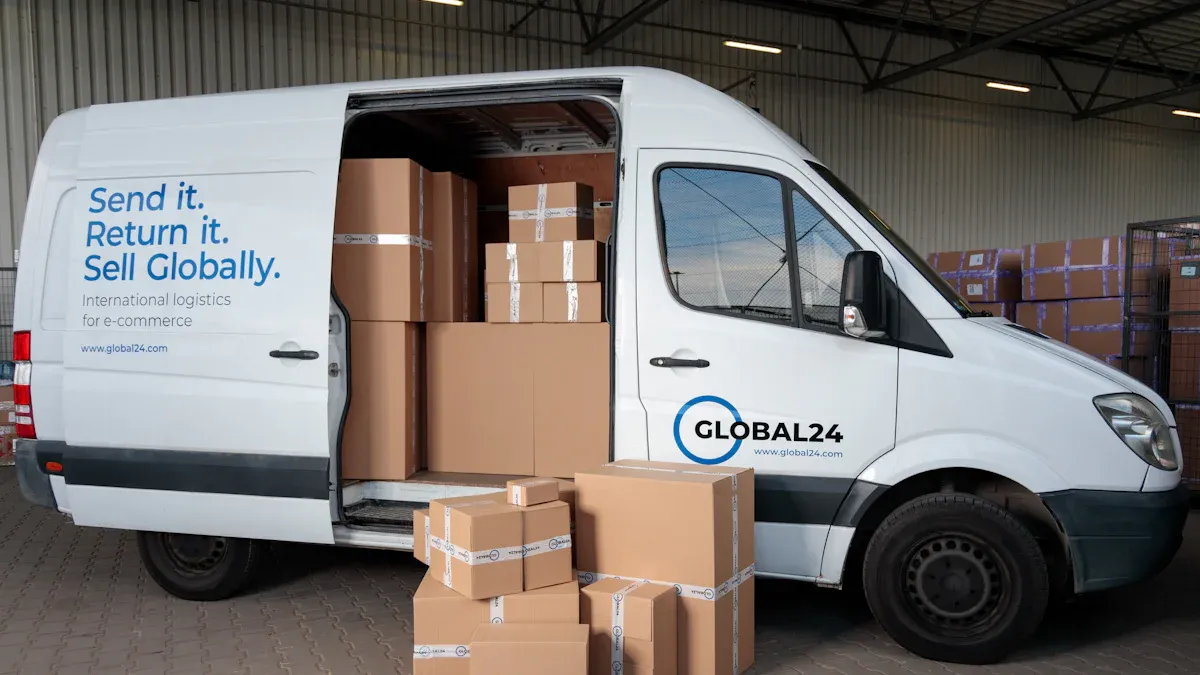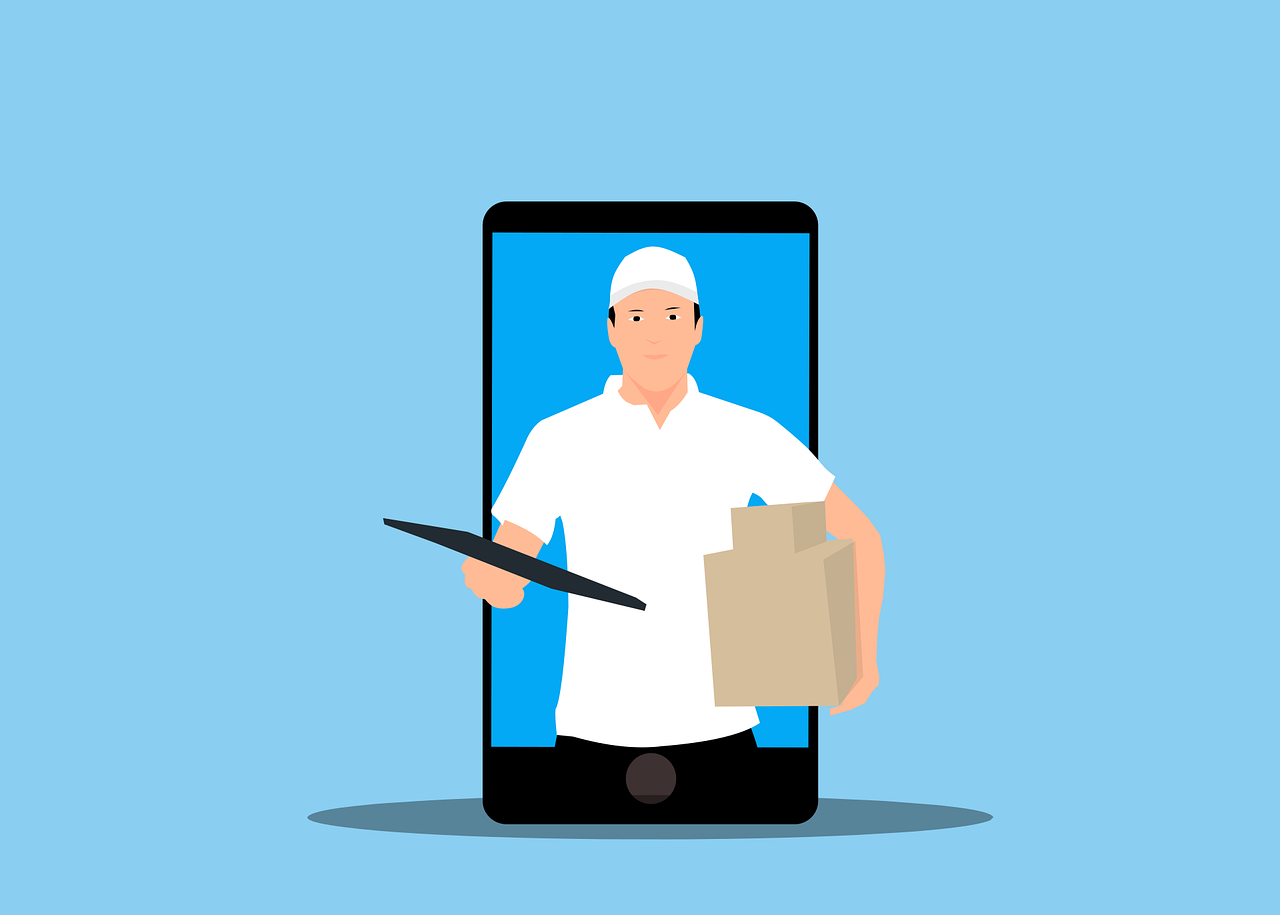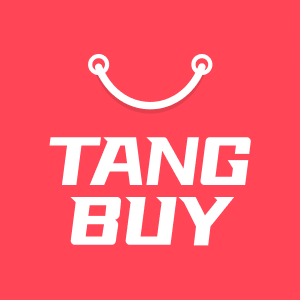2025 Cross-Border Dropshipping: Trusted Suppliers & Tools to Expand Your Reach

If you want to do well with Cross-Border Dropshipping in 2025, you need trusted names like CJDropshipping, Spocket, and Zendrop. These suppliers give fast shipping and real-time stock updates. They work well with platforms like Shopify and WooCommerce. You can reach more people with automation tools, payment solutions, and supplier lists. Always check the supplier’s quality and order samples first. Use technology to help with order processing and stock control.
Key Takeaways
Pick trusted suppliers like CJDropshipping, Spocket, and AliExpress. They send products fast and have good quality items. Use automation tools to help with orders and stock. These tools also track shipments for you. This saves time and stops mistakes. Choose suppliers with warehouses close to your customers. This helps your buyers get their orders faster. It also makes them happier. Always order samples before you sell anything. This lets you check if the product is good. It helps you avoid returns and bad reviews. Give clear shipping times and tracking details to your customers. This keeps them updated and helps them trust you. Use payment options like PayPal, Stripe, and Wise. These make it easy and safe to get paid from anywhere. Talk well with your suppliers and pay them on time. This helps you build a good relationship. Keep making your shop better by trying new products. Listen to what your customers say. Use data to help you make smart choices.

Top Suppliers 2025

Picking the right supplier is very important for your dropshipping shop. In 2025, there are more choices, but not all suppliers are good. Here are some top global platforms and regional suppliers to think about.
Global Platforms
Tangbuy
Tangbuy is becoming a top choice for small businesses and dropshippers. Based in China, it offers factory-direct prices that can be up to 70% lower than retail. You can find trending products from 1688, Taobao, and top suppliers. Tangbuy works well for both Shopify and independent sellers. It also supports product customization, labeling, and professional inspection.
The platform includes a free 90-day storage service and combines multiple items into one shipment to save on shipping. While shipping is mainly by air or sea, Tangbuy continues to improve its logistics network. It’s a great option if you want flexible MOQs, faster product sourcing, and a trusted team behind your business growth.
AliExpress
AliExpress is still liked by many dropshippers. You can find millions of products at low prices. It works with Shopify, WooCommerce, and other big ecommerce sites. It is easy to start, but shipping can take a long time if your buyers are not in Asia. AliExpress is part of Alibaba Group, so you get a huge range of products and can sell worldwide. If you want to try new products or reach people everywhere, AliExpress is a good pick.
CJDropshipping
CJDropshipping lets you process orders fast and pick from many products. You can use private labelling and branding to make your shop special. The platform works with Shopify, WooCommerce, eBay, and TikTok Shop. CJDropshipping has warehouses in the US, EU, and other places, so shipping is quicker. They check products before sending them out, which helps with quality. If you want to grow your Cross-Border Dropshipping shop, CJDropshipping is a great choice.
Spocket
Spocket works with suppliers from the US and EU. You get quick shipping, good products, and branded invoices. The platform links with Shopify, WooCommerce, and Wix. Spocket is best if you want to sell to people in the US or Europe and need fast delivery in 2-5 days. Real-time stock updates help you not sell items that are gone. Spocket is easy to use for both new and experienced sellers.
SaleHoo
SaleHoo gives you a list of checked suppliers. You get market research tools and helpful support. The platform checks every supplier, so you avoid bad partners. SaleHoo works with Shopify and other ecommerce sites. It is a smart pick if you want less risk and trusted suppliers.
Modalyst
Modalyst is good for trendy fashion and top brands, mostly from the US and EU. You can automate orders and get real-time stock updates. Modalyst works with Shopify, Wix, and BigCommerce. If you want to sell boutique fashion or eco-friendly things, Modalyst is a strong choice. The focus on quality and branding helps your shop look good.
Doba
Doba links you with top global suppliers and is easy to use. You can export products and manage stock with automated tools. Doba works with Shopify, WooCommerce, and more. The platform checks suppliers to keep quality high. Doba is good if you want to manage many suppliers and products in one place.
Wholesale2B
Wholesale2B gives you over a million products from US suppliers. You can automate orders and keep your stock in sync on Shopify, WooCommerce, BigCommerce, eBay, and Amazon. Wholesale2B is great if you want lots of products and to sell on many sites. The automated tools save you time and stop mistakes.
Worldwide Brands
Worldwide Brands has a big list of certified wholesalers and dropshippers. You get many products and suppliers who have passed strict checks. The platform works with most ecommerce sites. If you want a big choice and peace of mind, Worldwide Brands is a safe option.
Sunrise Wholesale
Sunrise Wholesale is in the US and gives fast shipping and clear prices. You get market tips and quick order handling. The platform is best for US shops that want fast delivery and easy links to Shopify and other sites.
Tip: Pick a global supplier with warehouses near your customers. This means faster shipping and better service.
Platform | Key Strengths | Platform Compatibility | Unique Features / Suitability |
|---|---|---|---|
Tangbuy | Factory-direct pricing, product inspection, flexible MOQ | Shopify, WooCommerce, others | Ideal for small businesses and content sellers; 90-day free warehousing; access to trending Chinese products |
AliExpress | Huge product range, low prices | Shopify, WooCommerce, others | Global reach, easy start |
CJDropshipping | Fast processing, private label, global warehouses | Shopify, WooCommerce, eBay, TikTok Shop | Quality control, branding, fast shipping |
Spocket | US/EU suppliers, fast shipping | Shopify, WooCommerce, Wix | Local fulfilment, branded invoicing |
SaleHoo | Verified suppliers, market research | Shopify, others | Reduces risk, excellent support |
Modalyst | Trendy fashion, automation | Shopify, Wix, BigCommerce | Boutique brands, eco-friendly focus |
Doba | Curated suppliers, automation | Shopify, WooCommerce, others | Central management, supplier verification |
Wholesale2B | Wide selection, automation | Shopify, WooCommerce, eBay, Amazon | US-based, multi-platform integration |
Worldwide Brands | Certified suppliers, huge directory | Most ecommerce platforms | Strict verification, peace of mind |
Sunrise Wholesale | US-based, fast shipping | Shopify, others | Market insights, efficient fulfilment |
Regional Suppliers
You may want to focus on one region for even faster shipping and happier customers. Regional suppliers often have warehouses close to your buyers, so there are fewer customs problems and quicker delivery.
Tangbuy:It is ideal for sellers who want trending products, low MOQs, and bundled shipments from China. It's especially good if you're comfortable managing cross-border logistics or want to test products before scaling up.
Spocket: Best for US and EU markets. You get fast delivery, good products, and branding. Local suppliers help you avoid slow shipping.
CJDropshipping: Strong in the US, with warehouses for quick delivery and private labelling. You can grow your shop without slow orders.
Modalyst: Great for the US, especially for top brands and automated orders. You get many products and easy links to your shop.
Printful: Perfect for US print-on-demand items. You get custom products, fast orders, and easy links to big ecommerce sites.
BigBuy: Best for the EU. You get lots of stock, top fashion, and fast shipping in Europe. BigBuy helps you skip customs and VAT problems.
BrandsGateway: Focuses on top fashion for the EU. You get automation, real-time stock, and quick delivery.
AutoDS: Has warehouses in the US, UK, China, and Australia. You can reach buyers in many places with fast delivery.
Note: Regional suppliers are popular in 2025 because they deliver in 2-5 days, while global suppliers can take up to 30 days. Customers trust local suppliers more and like better branding.
Regional suppliers also use smart technology. You get real-time stock updates, automated orders, and easy links to Shopify and WooCommerce. This means less work for you and helps your shop grow.
The Asia Pacific area leads the market with over 33% share. You can find many suppliers here if you want to sell to Asian buyers.
US and EU suppliers are best for quick shipping and high trust.
Regional suppliers often give better quality checks and easier returns.
If you want to do well in Cross-Border Dropshipping, pick suppliers with strong stock control, fast shipping, and easy links to your shop. This will help you make customers happy and grow your shop in 2025.
Essential Tools
When you run a Cross-Border Dropshipping business, you need more than just good suppliers. The right tools help you save time and avoid mistakes. They also help you keep your customers happy. Here are the best platforms and solutions for 2025.
Automation Platforms
Automation makes things much easier. You can manage orders and update stock without doing it all yourself. You can also track shipments automatically. Here are some top choices:
Tangbuy
Tangbuy supports automation to make sourcing and fulfillment easier for sellers. With its Smart Shipping system and auto-synced warehouse updates, you can manage orders and inventory more efficiently. The platform also offers:
Auto inventory updates: Stock changes in real time, so you avoid selling out-of-stock items.
Smart Shipping suggestions: Recommends the best shipping route based on your needs.
Bundled shipping management: Combine products from multiple orders into one shipment.
Photo & inspection services: Automatically added before shipment for quality checks.
Tangbuy is a good option if you want streamlined operations without needing third-party apps.
Dropified
Dropified lets you add products to your shop quickly. You can set rules for prices and automate order fulfilment. You can even change product images. Dropified works with Shopify and WooCommerce. You get alerts when stock is low, so you do not sell out-of-stock items. This tool is good if you want to save time and avoid mistakes.
Spocket App
The Spocket App connects you with US and EU suppliers. You can import products and sync your stock. Orders are processed automatically. The app links with Shopify, WooCommerce, and Wix. You get real-time updates, so your shop always shows the right stock. Spocket’s branded invoices help your shop look professional.
Shopify Apps
Shopify has thousands of apps for automation. You can use AutoDS, DSers, or Zendrop to automate product imports and price updates. You can also track orders easily. These apps support many currencies and fast shipping from US and EU suppliers. Shopify’s app store has AI tools for product descriptions and marketing. You can connect your shop to social media, email marketing, and analytics tools with just a few clicks.
Platform | Automation Tools & Features | E-commerce Integrations | Cross-border Support | AI & Marketing Integrations |
|---|---|---|---|---|
Tangbuy | Smart Shipping, auto stock updates, order bundling, QC photo uploads | Manual order export; can integrate with platforms via CSV/API (custom support available) | Ships to 200+ countries, multi-language support, bonded warehouse options | Supports trending product curation (TikTok-style), influencer reward system, marketing photo service |
Shopify | AutoDS, DSers, Zendrop, Spocket automate imports, price updates, order tracking, fulfilment | 8,000+ apps, Amazon, eBay, social media | Multi-currency, US/EU suppliers, fast shipping | AI product descriptions, Klaviyo, Mailchimp |
WooCommerce | AutoDS, Dropified, Syncee automate price monitoring, imports, fulfilment | Plugin-based, hands-on setup | Multi-currency, Stripe & Klarna payments | AI inventory/pricing, SEO features |
WooCommerce Plugins
WooCommerce gives you lots of control. You can use plugins like Dropified, AutoDS, and Syncee to automate product imports and price changes. You can also automate order fulfilment. WooCommerce supports many payment gateways, so you can sell worldwide. AI tools help you manage your stock and pricing. If you want more control and customisation, WooCommerce is a strong choice.
Tip: Automation platforms like ShipStation and Easyship can cut fulfilment time by over half. They also reduce shipping mistakes and help you manage orders from many sales channels in one place.
ShipStation lets you print labels in batches and use many carriers. You also get branded tracking pages.
Easyship gives real-time shipping costs and calculates taxes and duties. It also creates customs documents automatically.
AutoDS links Walmart and eBay, automates listings, and uses AI for product research and pricing.
Payment Solutions

Getting paid quickly and safely is important for any shop. You need payment gateways that work worldwide and support many currencies. They should also keep your money safe.
Statrys
Statrys is a modern payment platform for global businesses. You can open accounts in many currencies and send or receive payments in over 50 currencies. Statrys offers strong security and fast transfers. This makes it a good choice for Cross-Border Dropshipping.
Local Payment Gateways
Local payment options help you reach more buyers. People trust payment methods they know. Here is a quick look at popular gateways:
Payment Provider | Key Features | Ideal For | Pros | Cons |
|---|---|---|---|---|
PayPal | One-click checkout, 25+ currencies, buyer protection | Small to medium businesses | High trust, easy integration | Higher fees, account freezes |
Stripe | 135+ currencies, advanced fraud prevention | Customisable payment infrastructure | Fast payouts, developer-friendly | Needs technical skills |
Wise | Low-cost currency management, 50+ currencies | Managing international payments | Low fees, easy transfers | Not for cash payments |
Klarna | Flexible payments, merchant protection | Higher order values | Reduces cart abandonment | Limited global coverage |
Mollie | Major European payment methods, multicurrency | European businesses | No monthly fees, easy integration | Limited outside Europe |
Shopify Payments | Zero extra Shopify fees, fraud tools | Shopify store owners | Seamless integration | Shopify only |
Adyen | 250+ payment methods, advanced risk management | Large enterprises | Global coverage, analytics | Complex setup |
Stripe and PayPal are top choices for global shops. They offer wide coverage and strong security. They are also easy to set up.
Wise is great for low-cost currency exchange.
Klarna and Mollie help you offer flexible payments, especially in Europe.
Note: Top payment solutions focus on security and stopping fraud. Providers like Verifone and Digital River offer multi-currency support and local payment methods. They also follow strict rules to keep your payments safe and protect your customers’ data.
Logistics Tools
Shipping and customs can be hard when you sell across borders. The right logistics tools help you track orders and manage customs. They also help you keep customers happy.
Shipping Platforms
Shipping platforms like ShipStation and Easyship make things easier. You can print labels in batches and compare carrier rates. You can track all orders from one dashboard. These tools support over 70 sales channels and give you branded tracking pages. You get real-time updates, so you always know where your parcels are.
ShipStation cuts fulfilment time by half and reduces shipping mistakes.
Easyship shows real-time shipping costs and delivery times at checkout. It also calculates taxes and import duties upfront, so your customers avoid surprise fees.
You can also use shipment data analysis platforms and AI-powered predictive analytics. These tools give you real-time inventory visibility and help you plan delivery routes. They also track your carbon footprint. Customers like clear updates and fast shipping.
Customs Automation
Customs can slow down your orders if you do not handle paperwork right. Customs automation software does this for you. It creates customs documents, classifies products, and checks for local rules. The software updates itself with new regulations, so you avoid fines and delays.
Customs compliance software automates filings and flags problems early. It also checks for banned parties.
It links with your shop and logistics tools, syncing data and reducing manual work.
You save time, avoid shipment holds, and grow your business without extra effort.
Block Quote: Automation and AI give you real-time updates and delay alerts. This helps you manage customer expectations and reduce cart abandonment, which is a big problem if shipping takes too long.
Professional customs brokers can also help with complex shipments. They know the rules and make sure your parcels clear customs quickly.
Always double-check your customs documents like packing lists, export licences, and invoices.
Choose the right Incoterms like DDU or DDP to show who pays for taxes and duties.
With the right logistics and customs tools, you can ship faster and avoid delays. This helps you keep your customers coming back.
Cross-Border Dropshipping Criteria

Product Quality
You want your customers to trust your shop. The first thing they notice is product quality. If you sell bad items, people will return them and leave bad reviews. Top suppliers in 2025 know this is important. They use strict checks and clear rules.
Benchmark / Quality Standard | Description / Requirement | Examples of Top Supplier Practices in 2025 |
|---|---|---|
Supplier Vetting | Seller ratings 4.5+ stars, Gold Supplier or Verified status on platforms like Alibaba | Alibaba suppliers offer Trade Assurance refunds for quality or shipping issues |
Sample Testing | Ordering samples to inspect product quality before selling | Standard practice to order samples to check materials and workmanship |
Quality Control (QC) Services | Built-in QC, third-party inspections for high-value items | CJdropshipping and EPROLO inspect products before shipping and replace damaged goods if fault is theirs |
Return Policies and Guarantees | Clear return policies, DOA guarantees, defective return coverage | Banggood: 7-day DOA guarantee, 30-day returns; DealExtreme: 90-day defective return policy |
Communication and Transparency | Clear communication of quality standards and return policies before selling | Sellers clarify returns and quality expectations upfront |
Integration and Branding | Integration with e-commerce platforms, branded packaging, private label options | Many suppliers offer branded packaging and private label services to enhance quality assurance |
Third-Party Inspection for High-Value | Use of external inspection services to ensure quality before shipment | Recommended for expensive products to ensure compliance with quality standards |
You should always order samples before selling new products. Check the packaging, how it feels, and if it works well. Read reviews on Trustpilot and Reddit. If you see many complaints, choose a different supplier. Good suppliers talk about their checks and return rules. This helps you avoid problems and keeps your customers happy.
Tip: Pick suppliers who give clear guarantees and easy returns. This means they believe in their products.
Shipping Speed

Fast shipping is very important. Most shoppers want their orders quickly. If you deliver in a few days, people will buy from you again. In 2025, top suppliers ship much faster.
Aspect | Data / Statistic | Explanation |
|---|---|---|
Average domestic shipping speed (2025) | Typical delivery window for domestic shipments from leading suppliers. | |
Average global delivery time (2025) | 3.7 to 4.2 days | Reflects improved shipping speeds worldwide. |
Cross-border shipping tolerance | Up to 50% of global shoppers willing to wait up to 1 week | Especially when free shipping is offered, indicating some flexibility in expectations for international orders. |
US shoppers valuing two-day shipping | 67.77% | Shows high customer demand for fast delivery in the US market. |
Customers expecting delivery within 2 hours (certain categories) | 77% | Indicates ultra-fast delivery expectations for specific product types. |
Average delivery time improvement (2020 to 2024) | From 6.6 days to 3.7-4.2 days | Demonstrates significant acceleration in shipping speeds over recent years. |
Standard shipping timeframe | 2-5 business days | Common shipping option balancing cost and speed. |
Customer acceptance of longer wait times for cross-border | High if communicated transparently | Suggests communication is key to managing expectations. |
Impact of shipping speed on customer satisfaction | Fast shipping correlates with higher repeat purchase rates and customer loyalty | Emphasizes importance of speed in customer retention. |
Always tell your customers how long shipping will take. If you use local suppliers, you can deliver in 2-5 days. If you ship from far away, let buyers know it might take a week. Many people will wait if you offer free shipping and keep them updated. Fast shipping makes customers happy and helps you sell more.
Integration
You want your shop to work well. Good integration with your supplier and platform saves time and stops mistakes. In 2025, top suppliers and platforms make this simple.
Verified suppliers now have automated stock and order management.
You can connect your shop to eBay, Amazon, Shopify, and more easily.
Multi-language and multi-currency support lets you sell worldwide.
Platforms like SaleHoo, Oberlo, and Chinabrands use API automation to sync orders and stock.
BigCommerce and Shift4Shop let you use over 100 currencies and set up your shop in many languages. You can manage shipping and taxes from one place. TopDawg gives real-time links with Shopify, Walmart, and eBay. This means you always know what is in stock and where your orders are.
Note: Good integration means fewer mistakes, faster orders, and a better experience for your customers.
When you pick suppliers for Cross-Border Dropshipping, look for those who link directly with your shop. This will help your business grow without extra stress.
Support

Getting good support from your suppliers is very important. If something goes wrong, you need help fast. In 2025, top suppliers do more than just reply to emails. They use smart tools and set clear rules to help you and your customers.
Here are some types of support you can get from the best suppliers:
Customer Support Type | Description | Why It Matters for You |
|---|---|---|
Proactive Communication | Updates about delays or supply chain issues | You can warn customers early and build trust |
Transparent Reporting | Shares fulfilment stats and defect rates | You spot problems before they grow |
Flexible Payment & Return Policies | Easy returns and insurance for lost goods | Fewer complaints and less risk |
Collaborative Forecasting | Shares sales data to match stock with demand | You avoid running out of popular products |
AI-driven Tools | Real-time inventory and demand forecasting | Faster response to changes and fewer surprises |
Service-Level Agreements (SLAs) | Formal promises with penalties for missed targets | You get reliable service and clear standards |
Blockchain Transparency | End-to-end order tracking and smart contracts | More trust and fewer disputes |
Eco-friendly Packaging & Local Sourcing | Sustainable packaging and local suppliers | Happier, loyal customers |
Collaborative Dashboards | Real-time monitoring of key performance indicators (KPIs) | You see issues and improvements instantly |
You might ask, “Do these support systems really help?” The answer is yes. Suppliers who talk to you first now deliver on time almost always. When they share order and problem rates, you see less than 2% of orders have issues. Easy returns and insurance mean fewer unhappy customers and less risk for you. AI tools help you keep the right stock, so you do not miss sales. Service-level agreements make sure suppliers do what they promise.
Mistakes can still happen sometimes. Items may go missing or be packed wrong. You are still the main contact for your customers. You must handle delays and returns quickly. That is why you should choose suppliers with strong support and flexible rules. They help you fix problems fast and keep your customers happy.
Tip: Always check if your supplier has real-time dashboards and clear SLAs. These tools help you spot problems and keep your shop running well.
Great support is not just about fixing mistakes. It helps build trust, makes your job easier, and helps your business grow.
Supplier Verification
Research Steps
Verifying your suppliers is one of the most important things you can do in Cross-Border Dropshipping. If you skip this step, you might face delays, poor products, or even scams. You want to make sure your supplier is real and reliable before you trust them with your business.
Here’s a simple step-by-step process you can follow:
Decide what kind of supplier you need. Are you looking for a wholesaler, manufacturer, or a dropshipping partner?
Use trusted directories like Alibaba, ThomasNet, SaleHoo, or Dropshipping.com to find options. These sites check suppliers before listing them.
Attend trade shows if you can. Meeting suppliers in person helps you see their products and ask questions directly.
Connect with suppliers on LinkedIn or other social media. You can see their history and get recommendations from others.
Join trade associations. These groups often know which suppliers are trustworthy.
Ask for quotes and product samples. This lets you check prices and see the actual products.
Read supplier reviews and ratings. Look for feedback about shipping speed, product quality, and customer service.
Check if the supplier has international warehouses. This can make shipping faster and easier.
Test their customer service. Send them a message and see how quickly and clearly they reply.
Make sure their product range fits your shop. Some suppliers focus on certain niches or regions.
Start with a small order or a limited product range. This helps you test the waters without too much risk.
Document your agreements. Write down prices, delivery times, and who is responsible for what.
Tip: Always compare a few suppliers before you choose. This helps you spot the best fit for your business.
Sample Orders

Ordering samples is a smart move. You get to see the product quality, check the packaging, and test the shipping speed. Many successful dropshippers use this step to avoid problems later.
Let’s say you sell fashion items. You order samples from two suppliers. One takes three days to deliver and the clothes fit well. The other takes two weeks and the sizes are all wrong. You would pick the first supplier, right? In fact, some dropshippers have seen return rates drop by 40% and positive reviews go up by 20% after switching to suppliers who passed the sample test.
Sample orders also show you how the supplier handles customer service. If they answer your questions quickly and fix any issues, you know you can trust them. This step saves you time and money in the long run.
Reviews
Reviews are your secret weapon. You can learn a lot from what other shop owners say. Look for reviews on trusted platforms like Trustpilot, Reddit, or even the supplier’s own site. Pay attention to comments about delivery times, product quality, and how the supplier handles problems.
If you see lots of positive reviews, that’s a good sign. If you spot repeated complaints about slow shipping or poor communication, you might want to look elsewhere. Don’t just read the five-star reviews. Check the lower ratings too. Sometimes, these tell you about problems that could affect your business.
Note: Reviews help you avoid costly mistakes. They give you real stories from people who have already worked with the supplier.
Communication
Good communication with your suppliers makes everything run smoother. If you want to build trust, you need to keep things open and honest from the start. You should not treat your supplier like just another vendor. Think of them as your partner. When you work together, you both win.
Here are some ways you can make your communication better:
Set up clear and open channels. Use email, chat apps, or project management tools. This helps you keep all your messages in one place and stops things from getting lost.
Give regular updates and feedback. If you spot a problem, tell your supplier right away. If something goes well, let them know too. This keeps everyone on the same page.
Be clear about what you expect. Talk about prices, return rules, and how long delivery takes. When you set these rules early, you avoid confusion later.
Try to meet your supplier face-to-face if you can. A video call or even a visit to their site helps you build a real connection. People trust you more when they see you.
Plan regular check-ins. A quick call or message every week keeps things moving. You can talk about your goals and any changes you need to make.
Use technology to help you. Project management platforms and shared documents make it easy to track orders and share files. This stops mistakes and saves time.
Remember that your supplier might speak a different language. Use simple words and be patient. If you can, offer support in their language or use a translation tool. This shows respect and helps you avoid misunderstandings.
Show respect for their culture. Learn about their holidays or business customs. This small step can make a big difference in how well you work together.
Tip: Treat your supplier as a partner, not just a service. When you work as a team, you solve problems faster and grow your business together.
If you follow these steps, you will find that your supplier responds faster and works harder for you. Good communication means fewer mistakes, quicker solutions, and a stronger business relationship.
Technology & Automation

Order Processing
Order processing is much easier in 2025. You do not need to do every step yourself now. Automation tools can do many jobs for you. When someone buys something, the system sends emails and makes shipping labels. It also updates tracking numbers without you doing anything. This saves you time and stops mistakes.
You can use third-party logistics companies too. They keep your products, pack them, and send them to your customers. This lets you spend more time growing your shop. You do not have to worry about shipping. Many 3PL companies use smart technology to help things run well. They give you updates, so you always know where your orders are.
Here are some good things about using order processing tools and 3PL services:
Orders are handled faster and with fewer mistakes.
Orders and stock are updated in real time.
You and your customers can track orders easily.
Costs are lower and delivery is quicker.
Tip: Pick a 3PL partner that works well with your tech. This helps your business grow and keeps your customers happy.
Inventory Management
It is now much easier to keep track of your stock. New inventory software shows you what you have right now. You can link your shop to different websites and warehouses. This means you will not sell too much or run out of best-selling items.
Many platforms use AI to guess which products will sell well. They can set up automatic reorders, so you never miss a sale. You can see all your stock on one screen, even if you sell on many sites.
Look for these features in inventory management tools:
Stock updates in real time for all your shops.
Alerts when you are low on stock.
Easy ways to export sales and stock data.
Support for many currencies and places.
Some tools, like ChannelGrabber, are great for UK and European sellers. They help with international shipping and keep your stock right. Cloud-based systems let you check your stock anywhere, even on your phone.
Note: Smart inventory management stops waste and keeps customers coming back.
Analytics
Analytics tools help you learn more about your business. You can see where your visitors come from and what they like. You can also see if your marketing is working. Google Analytics gives you reports about your website and customers. You can see which countries your buyers are from and what makes them buy.
ProfitWell is another helpful tool. It shows your earnings, costs, and profits. You can see how much you spend to get new customers. You can also see which products make the most money. Marketing tools like Klaviyo and Mailchimp use AI to group your customers. They help you send better emails.
Here is a quick table of what these tools do:
Tool | What It Tracks | Why It Matters |
|---|---|---|
Google Analytics | Website visits, conversions | Find out what works on your site |
ProfitWell | Revenue, costs, profits | See your real earnings |
Klaviyo/Mailchimp | Customer segments, campaign results | Improve your marketing |
Block Quote: Good analytics help you make smart choices and grow your shop faster.
Marketplace Integration
If you want to sell on many marketplaces, you need special tools. Marketplace integration makes things much easier for you. You can link your shop to Amazon, eBay, Shopify, and other sites. This means you do not have to update each website by yourself. You save lots of time and make fewer mistakes.
When you add a new product, it appears on all your shops at once. If you run out of stock, every site updates right away. You will not sell items you do not have. This keeps your customers happy and stops bad reviews.
Modern integration platforms, like Swap Commerce, do even more jobs. They help you with shipping, returns, and taxes in every country. You get live reports, so you always know what is happening. AI tools help you set good prices and show your shop in the right language. You can see which products are popular in each country.
Tip: Pick a platform that works with many shipping companies. This lets you give your customers more delivery choices and faster shipping.
Here is a quick look at what top integration tools can do for you:
Feature/Benefit | Description |
|---|---|
Vendor Onboarding | Add new sellers fast and grow your network worldwide. |
Product Listing Synchronisation | Keep your stock right on every site, so you never sell too much. |
Order Routing | Send orders to the right supplier, no matter where your customer lives. |
Commission Automation | Handle payments and fees without extra work. |
Integration with Global Carriers | Connect with over 100 shipping companies for smooth delivery. |
Payment Gateway Integration | Accept payments from Stripe, PayPal, and more, making it easy for buyers everywhere. |
Localised Language Support | Show your shop in the language your customers speak. |
Compliance with Regional Regulations | Follow local tax and trade rules, so you do not get into trouble. |
AI-driven Localisation Tools | Change your listings to fit each market and boost your sales. |
Centralised Dashboards | See all your orders, stock, and sales in one place. |
Automated Workflows for Compliance | Make sure you follow the rules in every country, with less effort. |
Secure Communication | Keep your chats and data safe when you work with suppliers and partners. |
When you use these tools, you can grow your shop in new countries without extra stress. You do not need to worry about different rules or languages. Everything runs from one dashboard. You can focus on finding new products and helping your customers.
Marketplace integration is your secret weapon for global growth. It helps you work smarter, not harder.
Challenges & Solutions

Shipping Delays
Shipping delays can make customers upset and lose trust. If your supplier is far away, parcels may take a long time. Sometimes, parcels get stuck at customs or are slow because of paperwork mistakes. If you do not control shipping, your shop’s reputation can get worse.
Here are some ways to fix shipping delays:
Tell customers when their order should arrive. Show delivery dates at checkout. Use live supplier data so customers know what to expect.
Pick suppliers who send orders quickly. Always have another supplier ready if there are problems.
Use shipping tools like ShipperHQ. These tools help you choose the best carrier and automate shipping.
Add order tracking to your shop. Customers like to see where their parcel is.
Try local warehouses or ship from more than one place. This helps parcels arrive faster.
Watch your shipping results. Use data and check suppliers often to find problems early.
Tip: If you keep customers updated about their orders, they will trust your shop and come back.
Customs & Taxes
Customs and taxes can be hard to understand. You might have delays if you fill out forms wrong or forget to pay duties. Every country has different rules, and these can change.
Here are ways to deal with customs and taxes:
Always check the latest import rules for each country you ship to.
Use customs software. This software fills in forms, checks codes, and updates rules.
Make sure your invoices and packing lists are clear and correct.
Pick the right Incoterms, like DDP, so your customer does not get surprise fees.
Work with suppliers who know customs. They can help you avoid mistakes and speed up delivery.
Challenge | Solution |
|---|---|
Paperwork errors | Use customs automation tools |
Unpaid duties | Choose DDP shipping or inform customers |
Changing rules | Stay updated and work with experts |
Note: Good customs management means fewer delays and happier customers.
Returns
Returns happen in every online shop, but they are harder when selling to other countries. Sometimes, products arrive broken or not as described. Other times, customers just change their minds.
To make returns easier:
Write a clear return policy and show it on your website.
Work with suppliers who give easy returns and refunds.
Use local return addresses if you can. This makes returns cheaper and faster for customers.
Talk to your customers. Tell them how to return items and what will happen.
Track why people return things. This helps you find problems with products or suppliers.
Callout: A simple and fair return process builds trust and keeps your customers happy, even if something goes wrong.
Customer Expectations
You know what your customers want. They expect fast shipping, clear updates, and good service. If you want to keep them happy, you need to meet these expectations every time. In 2025, shoppers have more choices than ever. They can switch to another shop with just a click. You must stand out by giving them what they want.
What do customers expect from your shop?
Fast Delivery: Most people want their orders in a few days. Some even hope for same-day or next-day delivery. If you use local suppliers, you can meet these needs. If you ship from overseas, tell your customers how long it will take.
Clear Communication: Customers like to know where their order is. They want tracking numbers and regular updates. If there is a delay, let them know right away. Honest updates build trust.
Easy Returns: People feel safer when they know they can return items. Make your return policy simple and easy to find. If you offer free returns, you will see more repeat buyers.
Good Product Quality: Shoppers expect the product to match the pictures and description. If something goes wrong, they want quick help. Always check your suppliers and order samples first.
Personal Touch: Customers love a personal touch. A thank-you note or a small freebie can make a big difference. Branded packaging also helps your shop look more professional.
Tip: If you want to keep your customers coming back, focus on clear updates and fast problem-solving. People remember how you make them feel.
Here is a quick table to help you check if you are meeting customer expectations:
Expectation | How to Meet It | Why It Matters |
|---|---|---|
Fast Delivery | Use local suppliers, show delivery times | Builds trust and loyalty |
Clear Communication | Send tracking info, update on delays | Reduces complaints |
Easy Returns | Simple, visible return policy | Increases repeat purchases |
Good Quality | Check suppliers, order samples | Fewer returns, better reviews |
Personal Touch | Add notes, use branded packaging | Makes your shop memorable |
You can also use feedback tools. Ask your customers what they like and what you can do better. Listen to their answers. Change your shop to fit their needs. If you do this, you will see more happy reviews and more sales.
Callout: Meeting customer expectations is not just about products. It is about the whole experience. Make every step easy and clear.
Expand Your Reach
Niche Selection
Choosing the right niche is one of the most important steps when you start your dropshipping journey. You want to pick a niche that has high demand but not too much competition. This helps you stand out and attract loyal customers. Many successful shop owners use tools like Google Trends to spot what’s popular and what people are searching for right now.
Here’s a simple way to find your perfect niche:
Look for products that solve a problem or make life easier. People love items that save time or add value.
Check if the niche has steady demand all year. Seasonal products can be risky if you want stable sales.
Avoid markets that are already crowded. If you see too many shops selling the same thing, it’s hard to compete.
Make sure you can find reliable suppliers for your chosen products. Always check reviews and order samples first.
Research if there are any rules or certifications needed for your products. For example, some electronics need CE or FDA approval.
Test your ideas by sharing them on social media or with friends. See what gets the most interest.
Tip: Pick a niche you care about. When you enjoy your products, it’s easier to create great content and connect with your customers.
Product Trends 2025
You want to stay ahead of the curve. Watching product trends helps you spot new opportunities before everyone else. In 2025, shoppers care more about sustainability, personalisation, and health. Let’s look at four hot trends you can use to grow your shop.
Eco-Friendly Kitchenware
People want to live greener lives. Eco-friendly kitchenware is a top trend this year. You can offer reusable food wraps, bamboo cutlery, or silicone storage bags. These products help customers cut down on plastic waste. Many buyers look for items that are safe, durable, and easy to clean.
Choose suppliers who use sustainable materials.
Highlight eco benefits in your product descriptions.
Use branded packaging to show your commitment to the environment.
Customers love knowing they’re making a difference with every purchase.
Personalised Pet Accessories
Pet owners treat their animals like family. Personalised pet accessories are flying off the shelves. You can sell custom collars, engraved tags, or pet beds with names. These products make great gifts and help your shop stand out.
Work with suppliers who offer customisation options.
Show real customer photos to build trust.
Offer fast shipping for special occasions.
A personal touch makes every order feel special.
Health & Fitness Accessories
Health and fitness are more important than ever. People want to stay active at home and on the go. You can offer resistance bands, smart water bottles, or portable blenders. These items are lightweight and easy to ship.
Pick products that are safe and easy to use.
Check for certifications if needed.
Share tips and workout ideas to engage your audience.
Healthy living never goes out of style.
Tech Accessories
Tech gadgets keep getting smarter. Accessories like wireless chargers, phone stands, and smart trackers are in high demand. Shoppers want products that make life easier and look good too.
Choose items that work with popular devices.
Make sure your suppliers offer quality and fast delivery.
Use clear photos and simple instructions.
Tech accessories are perfect for upselling and repeat business.
By focusing on these trends, you can attract more customers and keep your shop fresh. Always test new products and listen to what your buyers want. This helps you stay ahead in a fast-changing market.
Supplier Relationships
Building strong supplier relationships is one of the best ways to grow your shop. When you work closely with your suppliers, you get better prices, faster shipping, and more support. You also solve problems much quicker. Good relationships help you stand out from other shops.
Start by treating your supplier as a partner. Share your goals and plans. Ask about their busy seasons and let them know when you expect more orders. This helps both of you prepare for busy times.
Here are some easy ways to build trust with your suppliers:
Communicate often. Send updates and ask questions if you are unsure.
Pay on time. Suppliers remember who pays quickly.
Give feedback. Tell them what works well and what needs fixing.
Visit their warehouse or set up video calls. Seeing each other builds trust.
Celebrate wins together. If you have a big sales month, thank your supplier.
Tip: A thank-you note or small gift can go a long way. Suppliers like to feel valued too.
You can also use a simple table to track your supplier contacts:
Supplier Name | Contact Person | Best Contact Method | Last Contact Date | Notes |
|---|---|---|---|---|
ABC Trading | Mr Lee | 10/03/2025 | Fast replies | |
FastShip Ltd | Ms Patel | 05/03/2025 | Great support |
Keep this table updated. It helps you remember important details and keeps your relationships strong.
Ongoing Optimisation
Your shop will not stay successful if you stop improving. Ongoing optimisation means you keep looking for ways to do better. You can test new products, update your website, and try new marketing ideas. This keeps your shop fresh and exciting.
Start by checking your shop’s data. Look at what sells best and what does not. Use this information to add more popular items and remove slow sellers. Try different product photos or change your descriptions to see what works best.
Here are some steps you can follow:
Review your sales and website traffic every week.
Ask your customers for feedback. Use surveys or quick polls.
Test new suppliers or products in small batches.
Update your shop’s design to make it easy to use.
Watch your competitors. See what they do well and learn from them.
Note: Small changes can make a big difference. Even changing a product photo can boost sales.
You can also use automation tools to save time. Set up automatic emails for new customers. Use stock alerts so you never run out of best-sellers. Keep learning about new trends and technology. This helps you stay ahead of the competition.
Remember, the best shops never stop improving. Keep testing, learning, and growing. Your customers will notice the difference.
You have seen how trusted suppliers and smart tools can help you grow your shop in 2025. Keep checking your suppliers and use new technology to stay ahead. Take small steps to reach new markets and protect your business from risks. Want to learn more? Try supplier directories, join online forums, or sign up for free webinars. Your next big step could be just a click away!
FAQ
What is cross-border dropshipping?
Cross-border dropshipping is when you sell to people in other countries. You do not keep any stock yourself. Your supplier sends the products straight to your customers. This lets you reach more buyers and grow your shop in many places.
How do I find trusted suppliers for 2025?
Begin by using supplier directories such as SaleHoo or Worldwide Brands. Always read reviews and try ordering samples first. Pick suppliers with high ratings and quick answers. Good suppliers help you avoid trouble and keep your customers pleased.
Which platforms work best for cross-border dropshipping?
Shopify and WooCommerce are both great options. They have lots of apps and plugins to help you automate tasks. You can link your shop to suppliers, payment systems, and shipping tools easily. These platforms let you manage orders from anywhere you are.
How can I speed up shipping for international orders?
Choose suppliers with warehouses close to your customers. Regional suppliers can deliver much faster. Offer tracked shipping so buyers can see their parcel’s journey. Tell customers about delivery times before they pay. Fast shipping makes people want to buy from you again.
What payment solutions should I use?
PayPal, Stripe, and Wise are good for worldwide payments. Mollie and Klarna are popular in Europe. Pick safe payment options that work with many currencies. This helps customers pay you easily and safely.
How do I handle returns in cross-border dropshipping?
Write a simple return policy and show it on your website. Work with suppliers who make returns easy. Use local return addresses if you can. Explain to customers how to send things back. A good return process builds trust and stops complaints.
What are the biggest challenges in cross-border dropshipping?
You might have problems with slow shipping, customs, or returns. Customers want fast delivery and helpful service. Use automation, clear updates, and trusted suppliers to fix these issues quickly.
Can I use AI tools to help my dropshipping business?
Yes, you can use AI tools for your shop. AI helps you find products, set prices, and do marketing. It can write product details and send emails for you. Using AI saves time and helps you make smart choices.

TangBuy: A Smarter Way to Dropship in 2025
If you're looking to stay competitive with dropshipping in 2025, speed and trend-awareness are key. TangBuy helps you stay ahead with real-time product trends, fast fulfilment, and factory-direct sourcing. With over 1 million ready-to-ship items, 24-hour order processing, and seamless Shopify integration, TangBuy makes it easier to test, scale, and succeed in today's fast-moving eCommerce landscape.
See Also
Profitable Dropshipping Concepts To Explore In 2025
Most Lucrative Dropshipping Markets To Target In 2025
Complete Guide To Starting A Dropshipping Venture In 2025
Essential eBay Dropshipping Advice For Sellers In 2025
Detailed Instructions For Launching Online Wholesale Sales In 2025

